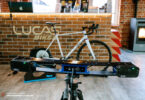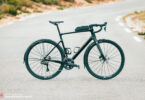Our test team’s expectations of the Specialized Aethos Expert were very high. After all, the Specialized S-Works Aethos won our previous road bike group test by a large margin, albeit with a few upgrades. We put the stock Expert model to the test to see how it fares as an all-road bike.
For an overview of the test fleet head to the group test: The best all-road bike 2022 – 7 models on test
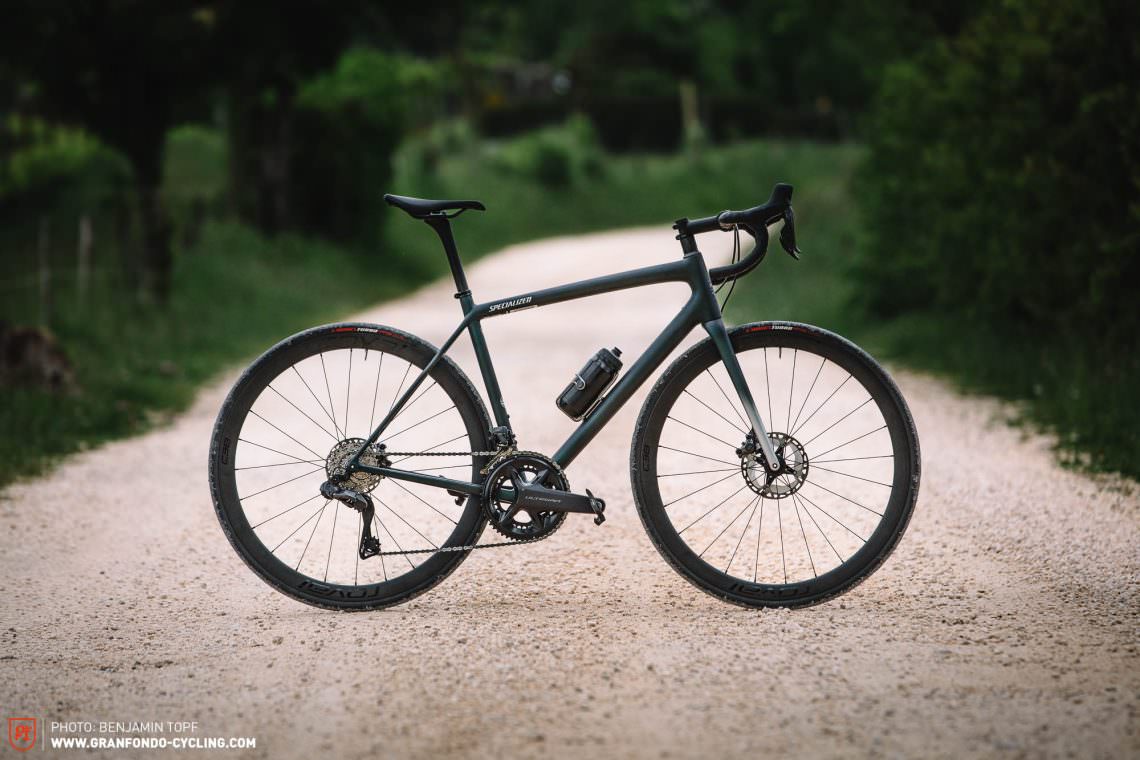
7.21 kg in size 56 | € 7,000 | Manufacturer’s website
The Specialized S-Works Aethos (review here) that won our previous road bike group test was only upgraded to a limited extent: along with the one-piece Roval Alpinist cockpit we had the Roval C38 wheels fitted to replace the stock Roval Alpinist models since they weren’t tubeless compatible. We were sure the Specialized Aethos Expert could deliver as an all-road bike in this group test even without the upgrades mentioned above and despite the fact that it has to make do with the lower-end FACT 10R carbon layup.
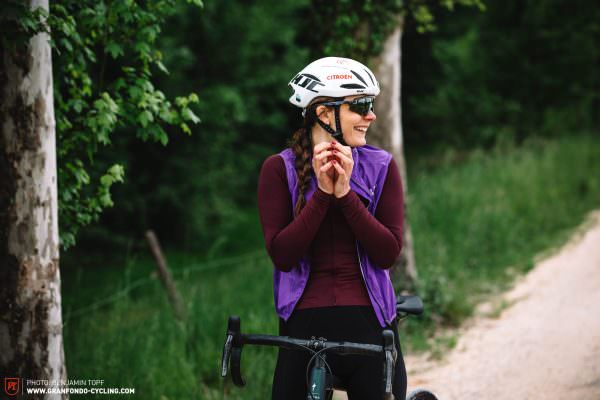
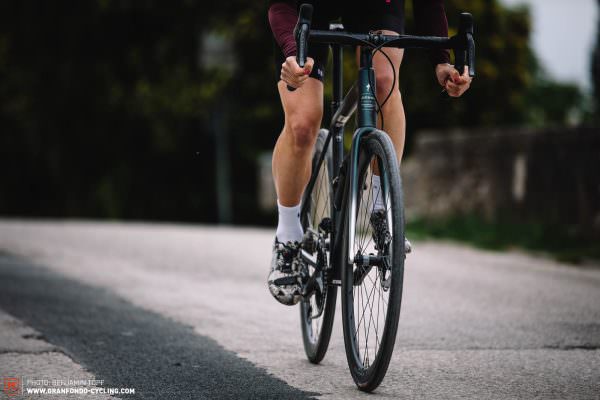
After all, the Roval C38 wheels are part of the standard spec. They have an internal rim width of 21 mm, providing a good basis with lots of support for the 700 x 26C S-Works Turbo tires, allowing them to inflate to a true width of 27 mm. However, the Specialized had the skinniest tires in the test field nonetheless and, along with the Sarto Seta Disc, it’s the only other bike that came set up with tubes. Besides scoring lower in the group test, this robs you of confidence on bumpy surfaces like poorly maintained asphalt or hardpack. For the cockpit, Specialized rely on a classic two-piece setup consisting of a 100 mm Specialized Pro SL stem and a 420 mm wide Specialized Expert Shallow handlebar. This combination leaves little to be desired in terms of ergonomics, but since it’s made of aluminium, it can’t match the comfort offered by the carbon Roval Alpinist seat post at the rear. Moreover, the level of integration isn’t what we’d expect, though this is something we’re used to from the Aethos.
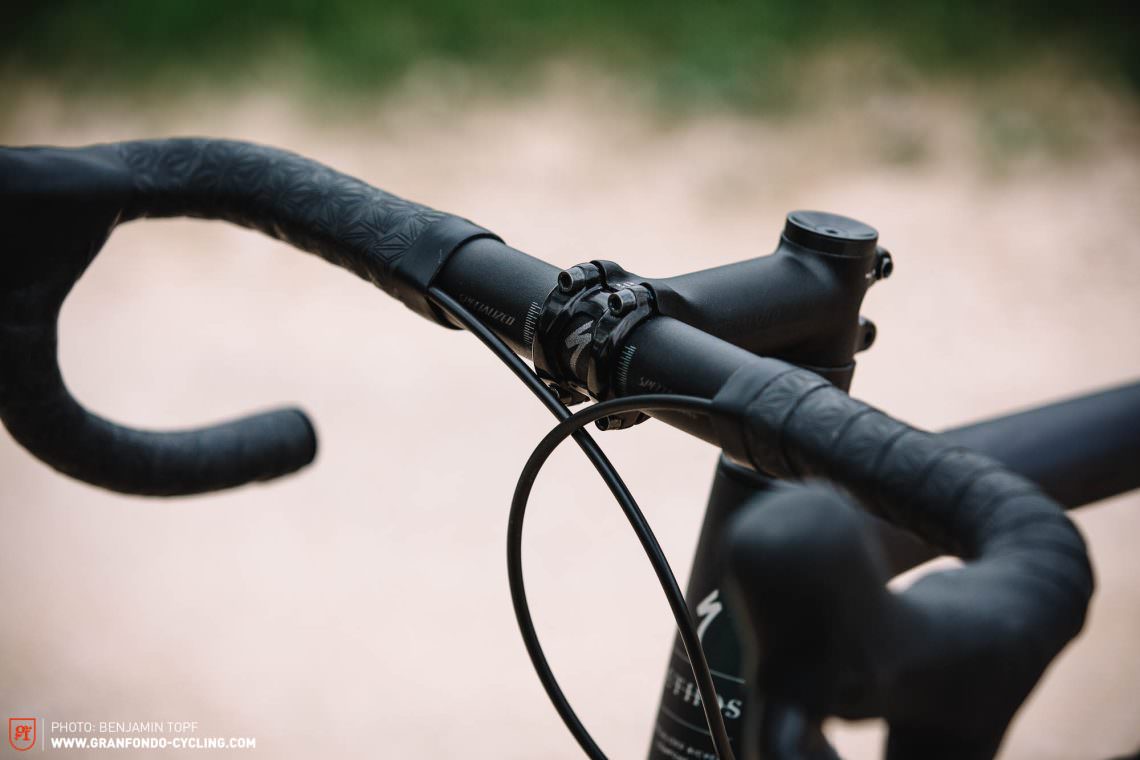
The external cable routing around the cockpit of the Specialized Aethos Expert is polarising. Some love the bike’s classic look, whereas others feel it’s outdated.
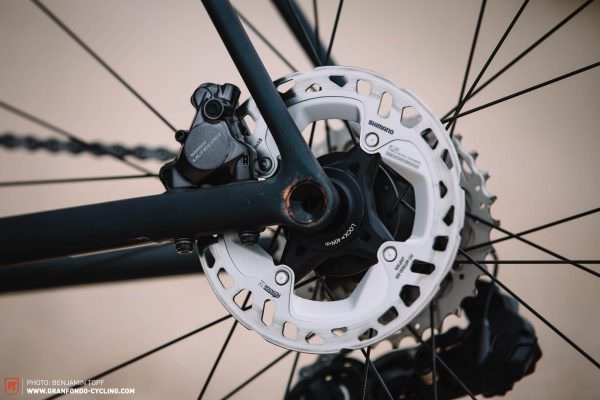
The rear Shimano ULTEGRA brake rotor on the Specialized Aethos Expert works with a direct mount calliper, but it’s just 140 mm in diameter. Considering the bike’s climbing and descending capabilities, a 160 mm rotor would have been a better choice at the rear.
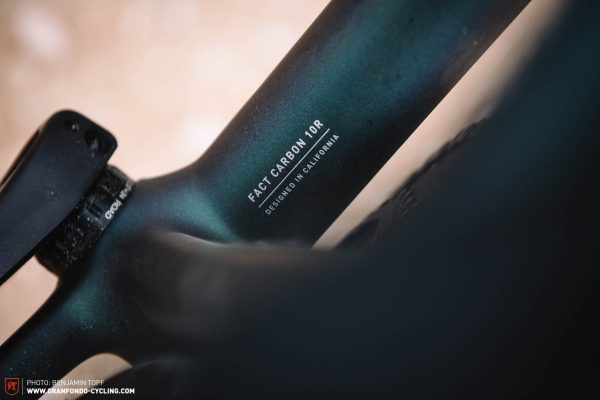
Despite the fact the Specialized Aethos Expert has to make do with the more affordable FACT 10R carbon layup, the frame offers plenty of compliance where needed and stiffness when pedalling.
Specialized Aethos Expert 2022
€ 7,000
Specifications
Seatpost Roval Alpinist 27,2 mm
Brakes Shimano ULTEGRA 160/140 mm
Drivetrain Shimano ULTEGRA Di2
Chainring 52/36T
Stem Specialized Pro SL 100 mm
Handlebar Specialized Expert Shallow 420 mm
Wheelset Roval C38
Tires S-Works Turbo
Cranks Shimano ULTEGRA Di2 172,5 mm
Cassette Shimano ULTEGRA CS-R8100 11–30T
Technical Data
Size 49 52 54 56 58 61
Weight 7.21 kg
Specific Features
classic design
SWAT mount on the saddle
frame stiffness achieved via the top tube
tubeless-ready Roval C38 wheels
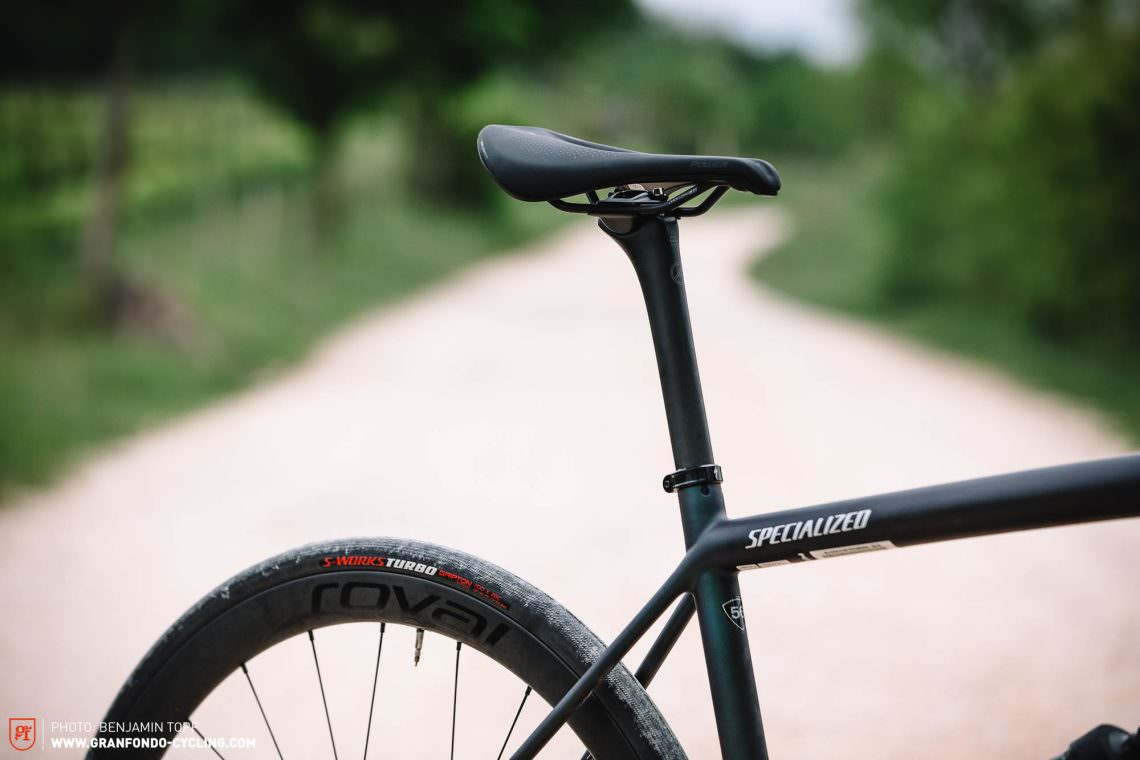
The Roval Alpinist seat post is the main source of comfort at the rear of the Specialized Aethos Expert, offering excellent vibration damping.
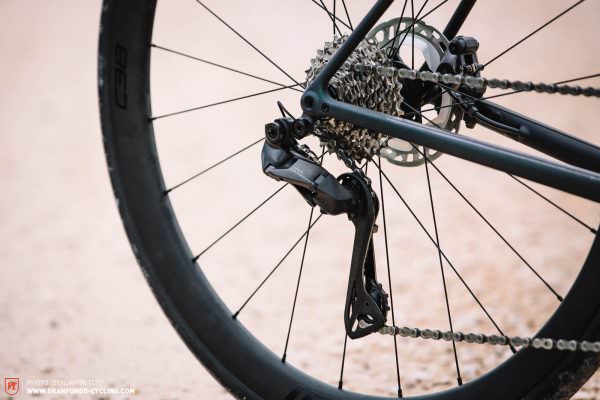
Combined with a 52/36 t crankset, the 11–30 t cassette on the Specialized Aethos Expert will have less fit riders wishing they had an easier gear on the climbs. A 34 t cassette could make all the difference.
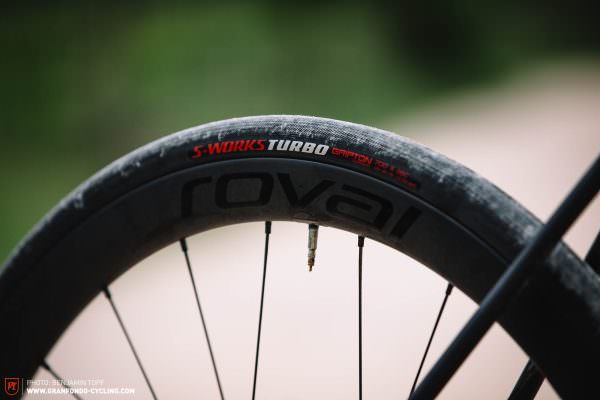
The 700 x 26C S-Works Turbo tires on the Specialized Aethos Expert inflate to 27 mm on the Roval C38 rims with an internal width of 21 mm. That’s simply too narrow for a modern all-road bike, significantly and unnecessarily limiting its versatility.
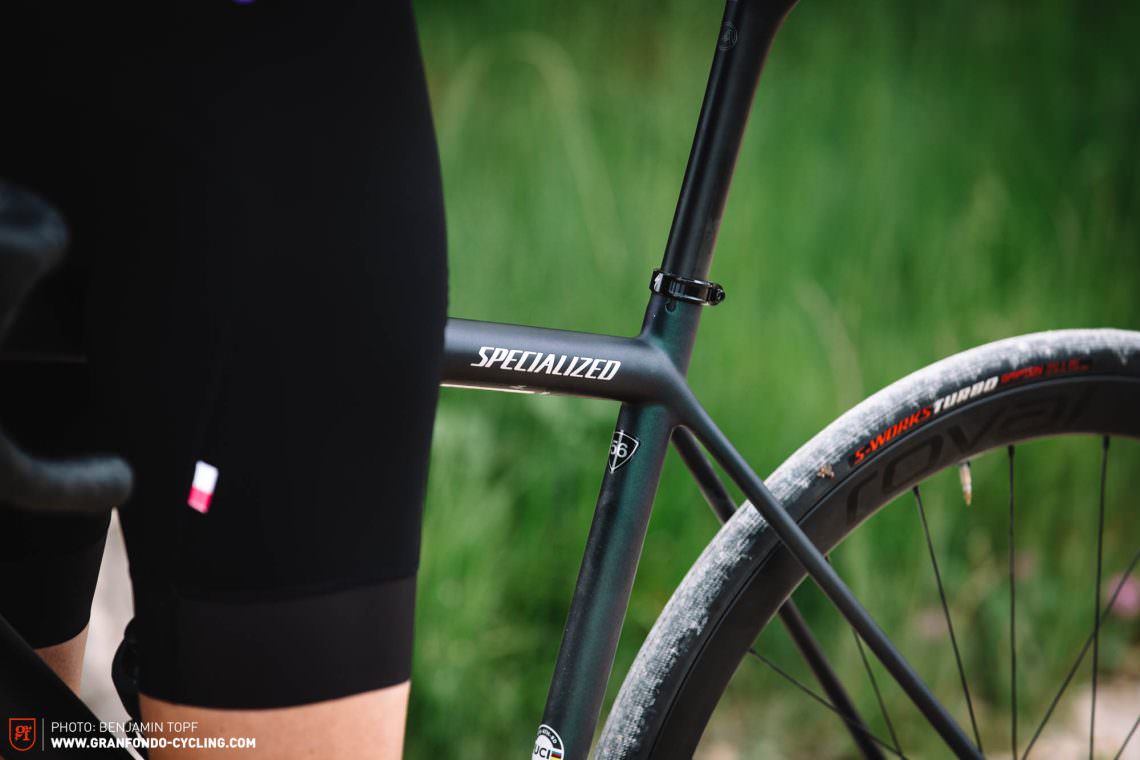
Weight savings instead of integration: the Specialized Aethos Expert is the ultimate mountain goat with excellent handling.
For the drivetrain, Specialized have opted to go with the new ULTEGRA Di2 groupset, which means there isn’t anything to complain about regarding shifting speed and performance, even if the top-end DURA-ACE remains unbeatable in this respect. The 52/36 t crankset is paired with a 11–30 t cassette, which allows you to keep on pedalling at high speeds, though you might wish you had an easier gear on the climbs. If you’ve got enough power in your legs, the lightweight Aethos Expert is an excellent climber, nonetheless, weighing in at just 7.21 kg in size 56. Our test bike costs € 7,000 on the dot.
| Size | 49 | 52 | 54 | 56 | 58 | 61 |
|---|---|---|---|---|---|---|
| Seat tube | 431 mm | 462 mm | 481 mm | 504 mm | 532 mm | 567 mm |
| Top tube | 508 mm | 531 mm | 540 mm | 562 mm | 577 mm | 595 mm |
| Head tube | 109 mm | 120 mm | 137 mm | 157 mm | 184 mm | 204 mm |
| Head angle | 71.8° | 72.5° | 73.0° | 73.5° | 73.5° | 74.0° |
| Seat angle | 75.5° | 74.0° | 74.0° | 73.5° | 73.5° | 73.0° |
| Chainstays | 410 mm | 410 mm | 410 mm | 410 mm | 410 mm | 410 mm |
| BB Drop | 74 mm | 74 mm | 72 mm | 72 mm | 72 mm | 72 mm |
| Wheelbase | 973 mm | 975 mm | 978 mm | 991 mm | 1,005 mm | 1,012 mm |
| Reach | 375 mm | 380 mm | 384 mm | 395 mm | 402 mm | 408 mm |
| Stack | 514 mm | 527 mm | 544 mm | 565 mm | 591 mm | 612 mm |
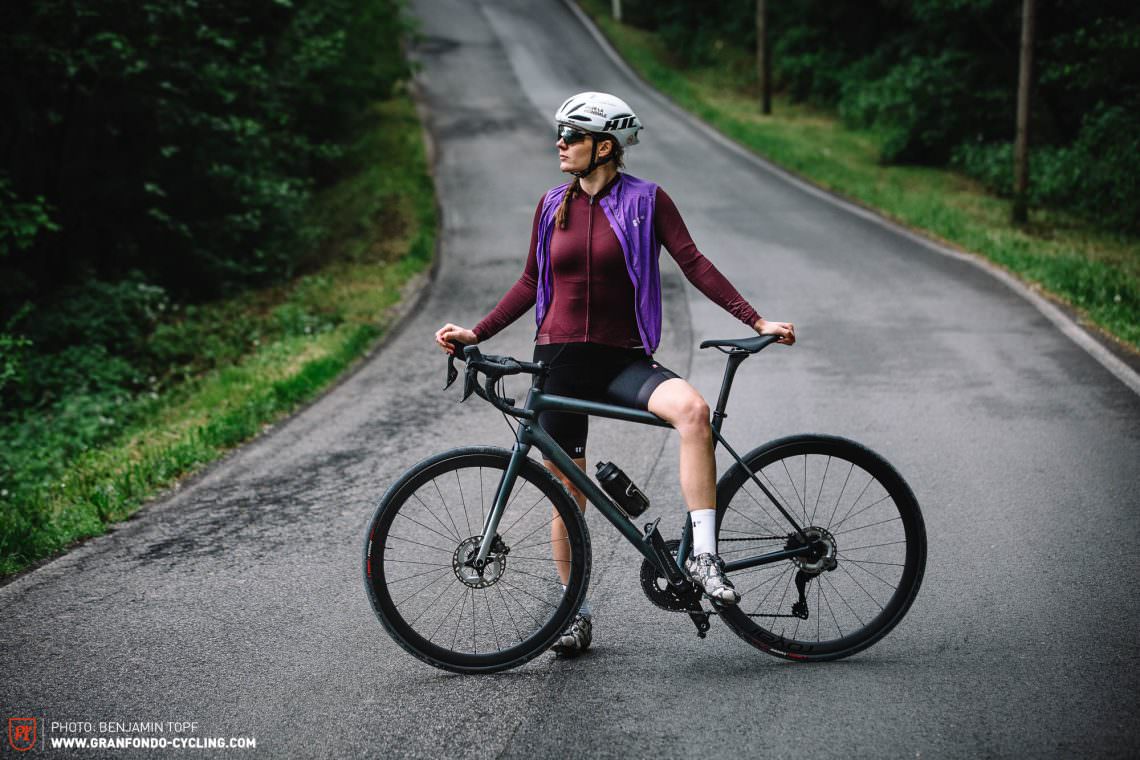
Jersey BBUC Everyday Longsleeve Jersey | Shorts BBUC Everyday Pro Thermal Bibs
Shoes Sidi Sixty Limited Edition | Socks BBUC Logo Socks
The Specialized Aethos Expert in review
The Specialized Aethos Expert is on par with the Parapera Atmos Masterpiece in terms of acceleration, both of which set the standard in this group test. Whether you’re on a flat road or winching your way up a climb, it’s always willing to accelerate. Like the Parapera, however, it struggles keeping up with the other bikes on test when it comes to efficiency at speed and holding the pace – the lack of aerodynamic optimisation makes a marked difference here. The excellent vibration damping is its saving grace regarding efficiency, ultimately keeping the bike from falling back to the end of the test field. It’s the same vibration damping that the Specialized benefits from in terms of comfort, which is down the seat post and the compliance offered by the frame. On bumpy roads, broken asphalt and hardpack, the comfort the bike is able to generate this way is easily enough. However, bigger bumps get passed onto the rider a lot less mitigated in comparison to the most comfortable bikes on test. The tires also reach their limits in these instances, making you grit your teeth every time you hit a bump for fear of puncturing them.
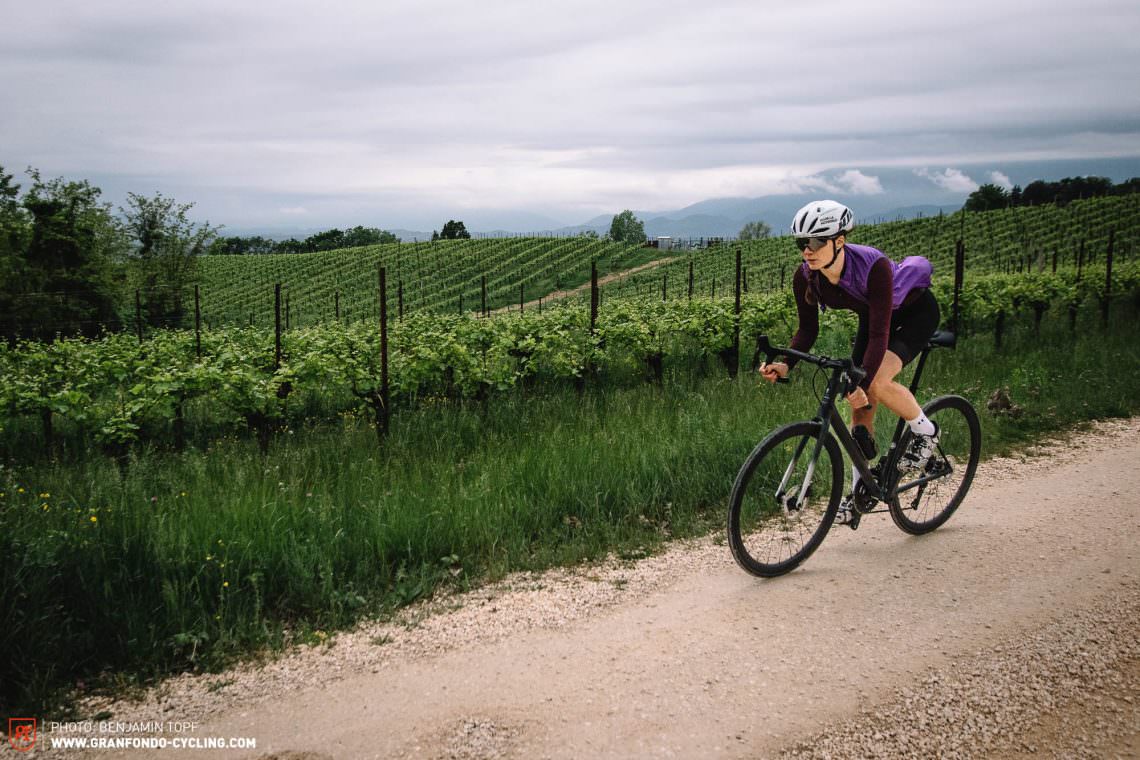
The handling of the Specialized Aethos Expert makes up for any of these shortcomings, showing the rest of the test field how it’s done. Since the frame’s stiffness doesn’t come from the down tube but runs from the head tube to the bottom bracket via the top tube instead, it allows for a certain level of torsional flex. Thereby, the Aethos’ handling is intuitive and excellently balanced between agility and composure, making the steering feel very direct yet cornering as if it’s on rails, even when things get bumpy. It’s a lot of fun and instils you with confidence – as long as you’re riding on asphalt. On gravel, the narrow S-Works tires mean that the Aethos reaches its limits a lot sooner than bikes with wider tires, which can be a safety factor on loose terrain.
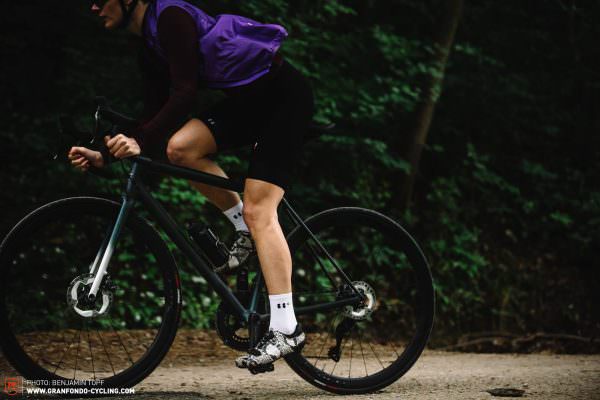
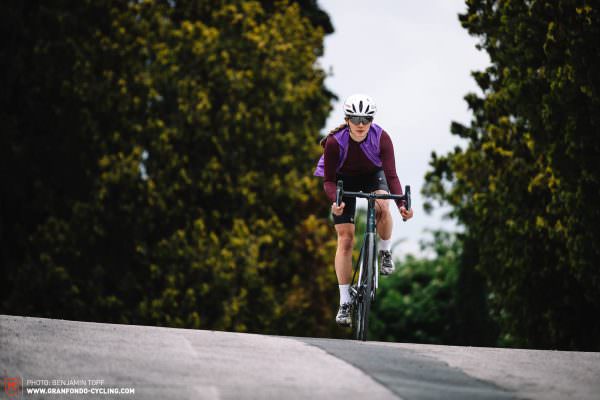
Tuning tip: wider, higher-volume tires are a relatively cheap upgrade that can make the bike a lot more versatile
All in all, the Specialized Aethos Expert proves to be more than capable in this group test too, delivering thanks to its superior handling and first-rate vibration damping. That said, it hasn’t got what it takes to repeat what its big brother, the Specialized S-Works Aethos, managed to do by taking the crown. Having the skinniest tires on test and set up with tubes, it’s just too limited, and its lack of efficiency at speed also sees it falling behind. The Specialized Aethos Expert is best reserved for steep climbs on asphalt roads followed by winding descents filled with all kinds of corners.
Riding Characteristics
4Agility
- cumbersome
- playful
Stability
- nervous
- confident
Handling
- demanding
- balanced
Fun factor
- boring
- lively
Comfort
- firm
- comfortable
Value for money
- terrible
- very good
Our conclusion on the Specialized Aethos Expert
There’s no doubt, the Specialized Aethos Expert is an excellent bike, offering brilliant handling and excellent climbing characteristics. As such, it’s the right choice for all the alpinists amongst us who spend most of their time on asphalted mountain pass roads full of steep climbs and technical descents. Due to the lack of high-speed efficiency and big bump compliance, you’ll find better bikes on test if you want to blast along on gravel roads and bumpy terrain.
Tops
- first-class handling
- quick acceleration
- pleasant level of vibration damping
- lots of all-round potential with the right upgrades
Flops
- tires are too skinny and offer limited reserves
- lack of integration

You can find out more about at specialized.com
The testfield
For an overview of the test fleet head to the group test: The best all-road bike 2022 – 7 models on test
All bikes on review: BMC Roadmachine X ONE (Click for review) | Cervelo Caledonia-5 Ultegra Di2 (Click for review) | Parapera Atmos MASTERPIECE (Click for review) | ROSE REVEAL SIX DISC Red eTap AXS (Click for review) | Sarto Seta Disc (Click for review) | Specialized Aethos Expert | Trek Domane SLR 9 (Click for review)
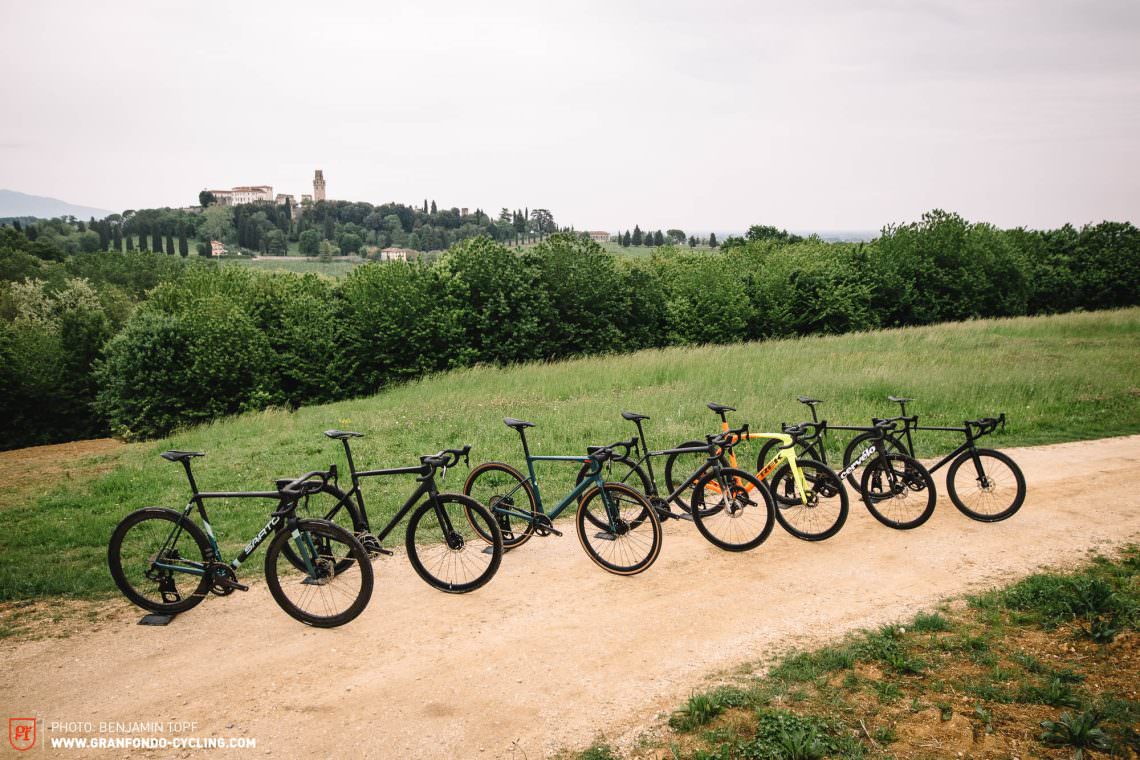
No, it’s not about perfect race tracks, it’s about efficiency. Fast, fleet-footed and efficient – those who want to speed along high-speed passages need a defined and spritely bike that accelerates with ease and efficiency. Nevertheless, reliable components are important too. We interpret “Smooth tarmac” bikes as follows: Hard efforts at high speeds with a maximum efficient bike on a consistently well-paved road. Effort-joy ratio: 80:30 (not everything has to be 100%!)↩
… also known as bike riding. Broken-up roads in the hinterland, deadlocked gravel roads, loose surfaces – sometimes muddy, sometimes bone-dry. For this, it takes bikes with super all-round, handling and wearing qualities uphill and downhill. Effort-joy ratio: 50:50↩
If you want to use your bike almost every day, you usually do not need an extremely tuned racing machine. Solid components, which are able to cope with the rigours of continuous usage in any kind of weather, are part of the basic equipment. At the same time, the bike should have practicable details: integrated fenders/assembly options, luggage racks/attachment points and a light system or at least the option of installing bike lights. The position on the bike should be rather relaxed, the overall comfort high, so that the Afterwork Ride becomes a cure and not a curse. Effort-joy ratio: 30:70↩
You can find more info about our rating system in this article: Click here! ↩
Did you enjoy this article? If so, we would be stoked if you decide to support us with a monthly contribution. By becoming a supporter of GRAN FONDO, you will help secure a sustainable future for high-quality cycling journalism. Click here to learn more.
Words: Photos: Benjamin Topf


